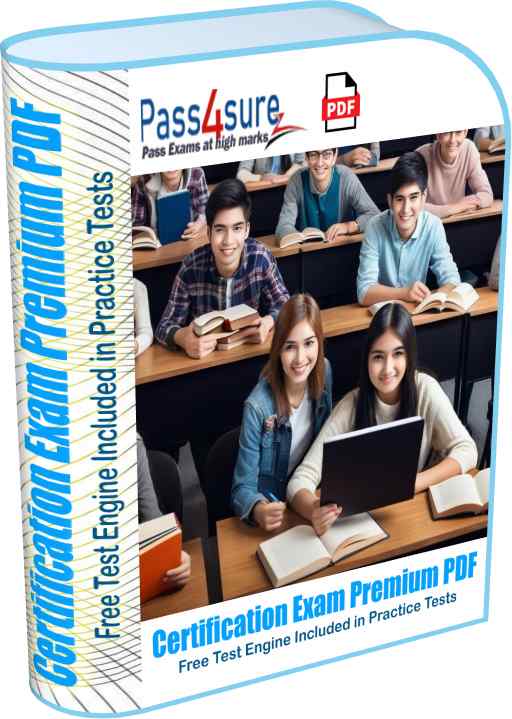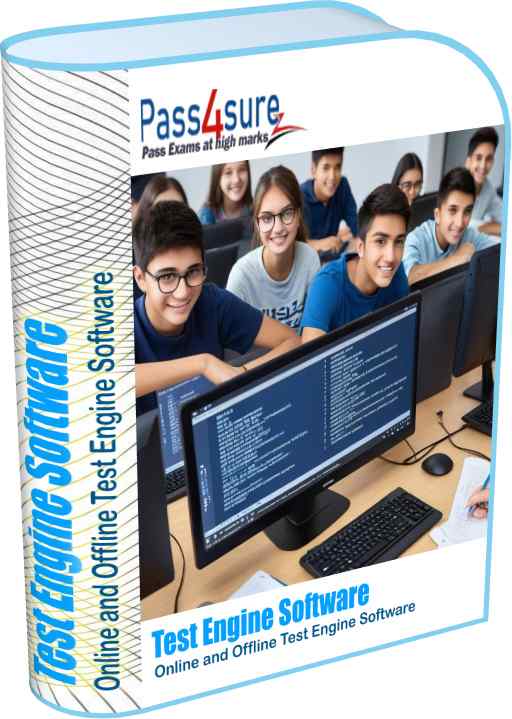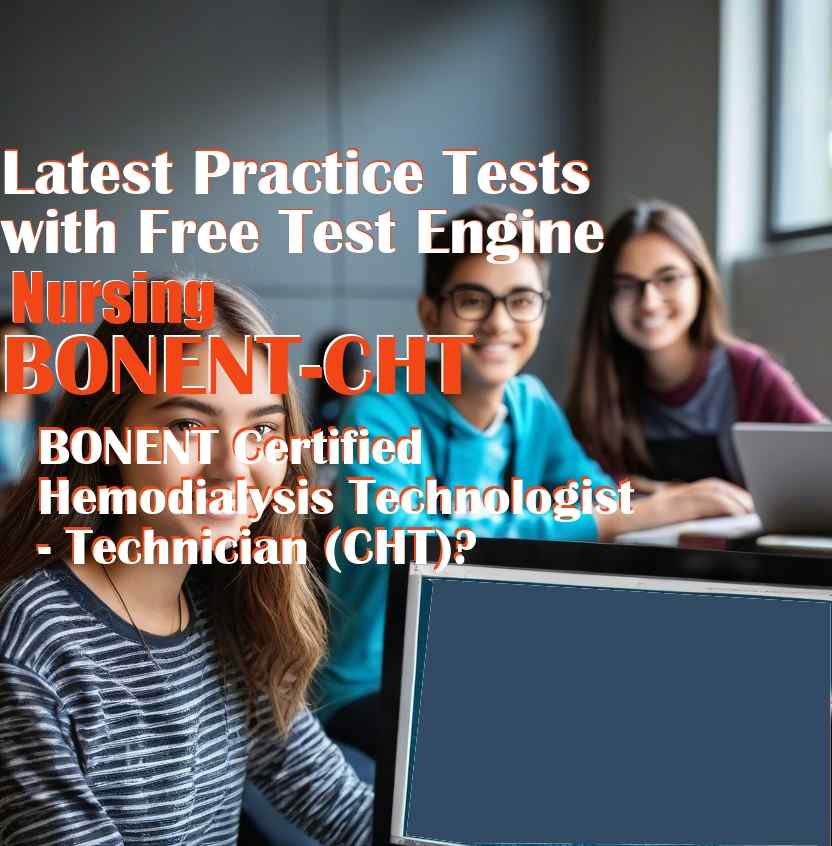| Exam Code | NSCA-CPT |
| Questions and Answers | 75 |
| Premium Access | Yes |
| Online Test Engine | Yes |
| Comprehensive Q&A | Yes |
| Success Rate | 98% |
| Real Questions | Yes |
| Updated Regularly | Yes |
| Portable Files | ✔ |
| Unlimited Download | ✔ |
| 100% Secured | ✔ |
| Confidentiality | 100% |
| Success Guarantee | 100% |
| Any Hidden Cost | $0.00 |
| Auto Recharge | No |
| Updates Intimation | by Email |
| Technical Support | Free |
| PDF Compatibility | Windows, Android, iOS, Linux |
| Test Engine Compatibility | Mac/Windows/Android/iOS/Linux |
| Sample Questions |  |
Pass4sure Practice Tests are an effective way to prepare for the NSCA-CPT exam. The practice tests include premium PDF and Test Engine Software. Pass4surez.in provides an extensive question bank to improve your knowledge and help you achieve high marks on the NSCA-CPT exam.
The NSCA Certified Personal Trainer exam questions and answers on Pass4surez.in are regularly verified and updated to ensure they reflect the latest syllabus and topics covered in the real test. The certification exams and entry test exams from pass4surez.com make you familiar with the test environment. The goal is to enhance your knowledge of the NSCA-CPT exam and enable you to pass it on your first attempt.
The PDF of NSCA-CPT exam questions and answers provided by Pass4surez.in contains a comprehensive pool of questions and verified answers, including references and explanations where applicable. The objective is not only to help you pass the exam, but also to significantly improve your knowledge of the latest NSCA-CPT course topics.
 |
|
CERTIFICATION EXAM PREMIUM PDF
Pass4Sure provide premium PDF that contains all the questions and answers that are necessary to make your concepts about the exam topics clear and boost your knowledge about the exam. These questions and answers make you ready to face actual test in test centers. Our team keep on revising material and update the exam questions accordingly. You will feel confident in test center. Our support team keep on helping our customers to make their testing experience best. Our premium PDF files are searchable, convertable and printable at high quality to make book that you can study during traveling or during vacations. Our automated system sends intimation email to our customers on each update. The files in customer download section is overwritten with latest pdf files.
|
| |
|
 |
|
CERTIFICATION EXAM TEST ENGINE
Pass4sure test engine is best certification and examination preparation tool that help you make yourself ready to take the actual exam and get high marks in the exam. Our OTE (Online Test Engine) support all OS Platforms including iOS, Android, Windows, Linux, Chromebook etc and provide up to date experience to get ready for actual test. Our Offline Test Engine is compatible to all windows platforms including latest windows versions. Our test engines helps to familiarize actual test environment and makes you ready to take timed tests. Your performance history and graphs helps you to see when you are ready to sit in actual exam in test center. These test engines uses up to date and latest questions and answers, keeps on updating the questions pool and sends you intimation on each update.
|
Pass4sure Premium PDF and Test Engines support all platforms and devices including mobile devices and computers. You should download sample PDF and Test Engine to evaluate the product before you buy the full version. Our exam samples include some questions that may be or may not be up to date but full version is always up to date.
Exam ID : NSCA-CPT
Exam Title : NSCA Certified Personal Trainer
Questions : 140 scored, 15 non scored
Pass Marks : 77%
Duration : 3 hours
Exam Type : multiple-choice
The NSCA-Certified Personal Trainer® (NSCA-CPT®) exam is comprised of 140 scored and 15 non-scored* multiple-choice questions that tests candidate's knowledge in the following four domains:
Client Consultation/Fitness Assessment
Program Planning
Techniques of Exercise
Safety, Emergency Procedures and Legal Issues
There are 25-35 video and/or image items that assess competencies across multiple domains.
The pass rate was 77% for first-time candidates attempting the NSCA-CPT exam in 2018.
Domain Percent of Exam Number of Questions
Client Consultation/Assessment 23% 32
Program Planning 32% 45
Techniques of Exercise 31% 43
Safety, Emergency Procedures and Legal Issues 14% 20
Non-Scored Questions - 15
Total 100% 155
Number of video questions (already included in the total) 25-35
Length of exam 3 hours
INTRODUCTION
About the Association
Certifications Offered
Accreditation of NSCA Certifications
Registration of NSCA Certifications
Statement of Nondiscrimination
ABOUT THE EXAMS
Job Analysis
Item Writing
Standard Setting
Exam Content Outlines
CSCS
CSPS
NSCA-CPT
TSAC-F
Exam Preparation
Example Preparation Plan Options
Plans Recommended by Background
CERTIFICATION ELIGIBILITY
Eligibility Requirements
CSCS
CSPS
NSCA-CPT
TSAC-F
Acceptable Accreditation of Colleges and Universities
Exercise Science-Related Fields
Acceptable CPR/AED Certifications
Discipline Policy and Certification Appeals
EXAM REGISTRATION PROCESS
Completing the Registration Form
Release of Information
Affirmation
Special Accommodations
Eligibility Documentation
Academic Transcripts (CSCS and CSPS only)
CPR/AED Certifications
Practical Experience (CSPS only)
Exam Fees
Scheduling an Appointment
Test Center Locations
Exam Authorization Period
Changes to Contact Information
Name Changes
Contact Information and Communications
Registration Withdrawal and Refunds
Cancelling and Rescheduling Exam Appointments
Late Arrival and No-Show
Late Arrival
No-Shows
Inclement Weather, Power Failure, or Emergency
EXAM DAY
Candidate ID Requirements
Security
Personal Belongings
Items Not Permitted
Permitted Items
Comfort Aids
Permitted Medicine and Medical Devices
Permitted Mobility Devices
Exam Supplies
Questions and Comments About Exam Content
Breaks
Leaving the Exam Early
Exam Misconduct
Exam Results
Exam Scoring
Exam Pass Rates
Confidentiality of Results
Cancelled Scores
Awarding of Certification
Retake Policy
90 Day Waiver
Privacy Policy
Appealing Exam Results
1. BASIC PATHOPHYSIOLOGY AND SCIENCE OF HEALTH STATUS or CONDITION, DISORDER, or DISEASE 8 22 10 40
A. Cardiovascular: Individuals with…
1. Myocardial infarction
2. Angina
3. Hypertension
4. Peripheral vascular disease (e.g., deep vein thrombosis, peripheral artery disease)
5. Congestive heart failure
6. Valvular disorders
7. Revascularizations
8. Conduction defects or disorders (e.g., atrial fibrillation, pacemakers)
B. Pulmonary: Individuals with…
1. Chronic obstructive pulmonary disease (COPD) (e.g., emphysema, chronic bronchitis)
2. Chronic restrictive pulmonary disease (CRPD) (e.g., fibrosis, sarcoidosis)
3. Asthma
4. Pulmonary hypertension
C. Metabolic
1. Individuals with diabetes mellitus (Type 1 and 2)
2. Individuals who are overfat
3. Individuals with pre-diabetes
4. Individuals who have metabolic syndrome
5. Individuals with thyroid disorders (hypo/hyperthyroidism)
6. Individuals with end stage renal disease
D. Immunological and Hematological: Individuals with...
1. AIDS/HIV
2. Chronic fatigue syndrome
3. Fibromyalgia
4. Anemia
5. Auto-immune disorders (e.g., lupus, rheumatoid arthritis)
6. Bleeding/clotting disorders
E. Musculoskeletal/Orthopedic: Individuals with...
1. Osteoporosis and other low BMD conditions
2. Limb amputations
3. Osteoarthritis
4. Lower back conditions
5. Chronic musculoskeletal conditions (e.g., OA, osteoporosis, low back pain)
6. Frailty
7. Joint disorders (e.g., muscle, labrum, ligament, cartilage, tendons)
8. Joint replacements (e.g., shoulder, knee, hip)
9. Sarcopenia
10. Posture conditions
11. Cystic fibrosis
F. Neuromuscular: Individuals with…
1. Stroke or brain injury
2. Spinal cord disabilities
3. Multiple sclerosis
4. Cerebral palsy
5. Downs syndrome
6. Parkinsons disease
7. Epilepsy
8. Balance conditions
9. Muscular dystrophy
G. Post Rehabilitation: Individuals with…
1. Musculoskeletal disorders/conditions
2. Cardiopulmonary disorders/conditions
3. Neuromuscular disorders/conditions
H. Individuals with Cancer
I. Female Specific Conditions
1. Pregnant and postpartum
2. Female athlete triad
3. Menopausal/post-menopausal
J. Individuals with Behavioral/Psychological Disorders
1. Disordered eating patterns
2. Body image
3. Depression
4. Chemical dependency
K. Older Adults
L. Children and Adolescents
2. CLIENT CONSULTATION 6 13 0 19
A. Determine the Fitness Professionals Role in the Wellness Continuum
1. Align goals of the medical professional, client, and fitness professional
2. Maintain lines of communication with the primary healthcare provider
3. Optimize communication between the fitness professional and medical professionals
4. Verify physicians clearance to exercise
B. Perform Health Appraisal
1. Understand basic medical terminology
2. Interpret medical history (e.g., contraindications, continuity of care, goal viability)
3. Administer life-style questionnaire
4. Interpret “levels of pain” or prognosis (severity of condition; e.g., kurtzke expanded
disability status scale)
5. Interpret medical documentation
6. Document subjective client feedback and observations relevant to medical condition
7. Contact medical professionals for needed information or clarification on
medical history, restrictions, etc.
8. Identify signs and symptoms that indicate an individual should be referred
for medical care
9. Understand the roles of health professionals that prescribe exercise (e.g., physicians,physical therapists, occupational therapists, athletic trainers)
10. Perform nutritional review
C. Fitness Evaluation
1. Conduct fitness evaluation
a. vital signs (e.g. heart rate, blood pressure)
b. height and weight
c. body composition (e.g., “Bod Pod” and DXA reports)
d. girth measurements
e. muscular strength and endurance
f. speed/agility/power
g. cardiovascular endurance (e.g., submaximal VO2 max test on treadmill and bike)
h. flexibility
i. lipid profile
j. lung function
k. postural assessment
l. balance
m. functional assessment
n. evaluations specific for individuals with limited ability (e.g., 6-min walk, modified sit-and-reach from a chair, 8 lb. curl test, chair stands)
2. Prioritize need for clients with multiple diseases
3. Adjust fitness evaluation based on medical conditions and restrictions
4. Determine testing measures for the client
5. Document client progression with objective and subjective criteria
A. Develop SMART Goals
1. Manage fear and expectations
2. Increase functional capacity
3. Improve health risk factors (e.g., muscle wasting)
4. Improve confidence and self-image
5. Improve quality of life
B. Program Design
1. Develop individual training programs that are adapted to specific health condition (types, duration, frequency, intensity, progression, rest)
2. Develop group training programs that are adapted to specific health condition (types, duration, frequency, intensity, progression, rest)
3. Identify exercises indicated and contraindicated for clients condition
4. Identify environmental risks (e.g., MS and heat tolerance)
5. Evaluate communicable disease risk (client to fitness professional OR fitness professional to client)
6. Modify the warm-up and cool-down program to coincide with the limitations and capacities of a client
7. Modify the exercise program to coincide with the limitations and capacities of a client
8. Instruct a client on therapeutic exercise technique and equipment (including body position, speed/control of movement, movement/range of motion, breathing, and spotting/safety guidelines)
a. aquatic
b. range of motion
c. exercise with accessory equipment (e.g., chairs, walker/cane, gait belt)
d. balance/perturbation training
e. partner-assisted (support person and conduction exercises beyond the medical
fitness center/facility, or how they can help during the process of exercise)
f. home programs
9. Understand exercise-induced changes to body systems
a. neuromuscular system
b. cardiorespiratory system
c. musculoskeletal system
d. endocrine
e. psychological
C. Apply Motivational/Coaching Techniques
1. Motivational interviewing
2. Stages of change
3. Transtheoretical model
4. Behavioral economics
5. Planned behavior theory
6. Cognitive theory
7. Relapse prevention
8. Positive psychology
9. Solution-focused coaching
D. Monitor Client Outcomes
E. Recognize Need for Referral to Healthcare Professional
4. SAFETY, EMERGENCY PROCEDURES, AND LEGAL ISSUES 4 6 0 10
A. Comply with Scope of Practice Requirements
B. Practice Safety Procedures
C. Follow Emergency Procedures
D. Recognize Professional, Legal, and Ethical Responsibilities
E. Comply with HIPAA regulations
You can download a free PDF of the NSCA-CPT practice test and study guide to try before purchasing the premium files. To ace the exam, simply download the NSCA-CPT exam questions and answers file, memorize the content, and practice with the VCE Exam Simulator. This will ensure you are fully prepared for the real test.
The NSCA-CPT PDF practice test and exam questions and answers can be accessed on any device, including iPhone, iPad, Android, and Windows. You can download the PDF to your computer or any other device and start studying. Additionally, you can download and install the VCE Exam Simulator for further practice. The NSCA-CPT PDF is printable in high quality, allowing you to take it with you on vacations or while traveling. Your updated NSCA-CPT exam files can be accessed anytime from your online account, and you will receive your login credentials immediately after purchase.


